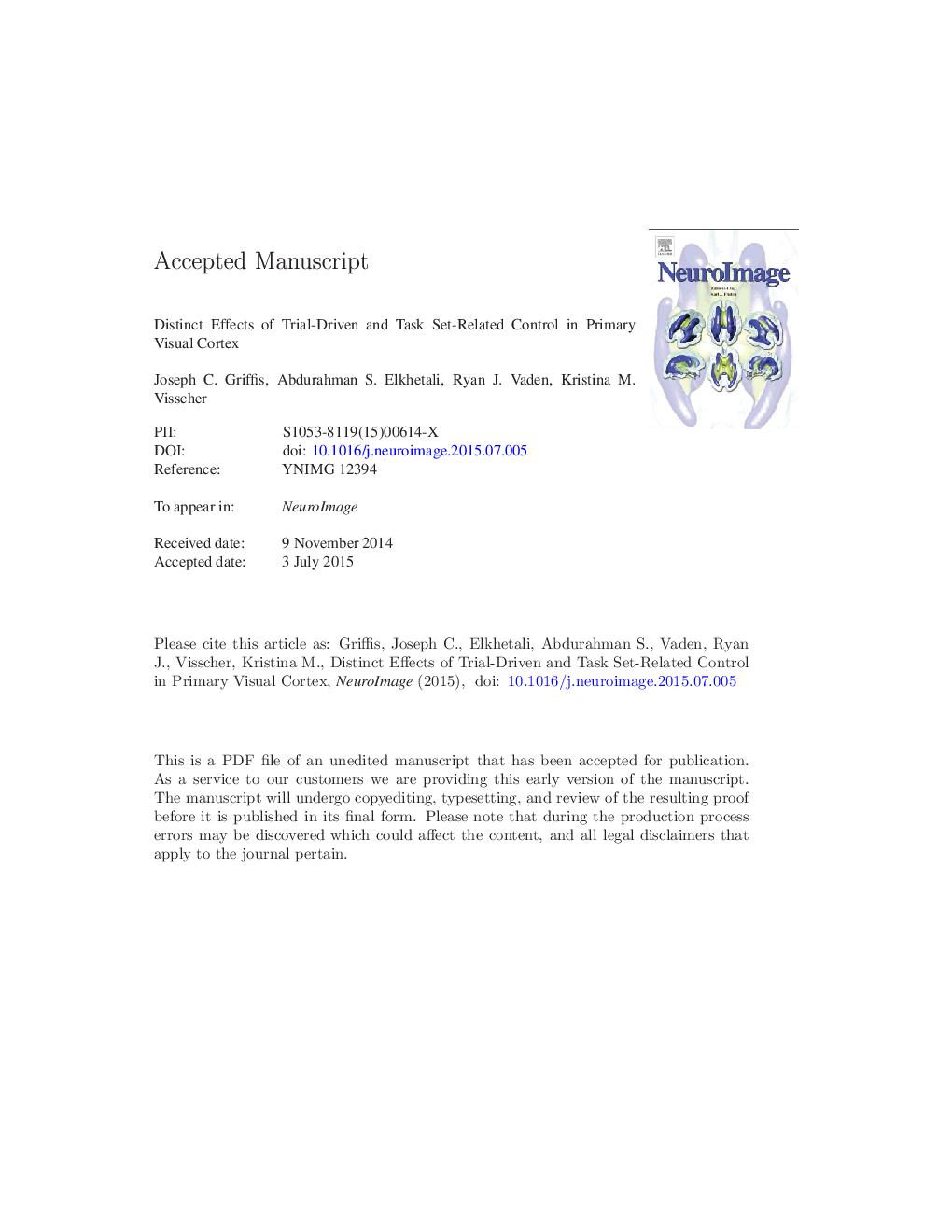| کد مقاله | کد نشریه | سال انتشار | مقاله انگلیسی | نسخه تمام متن |
|---|---|---|---|---|
| 6024490 | 1580887 | 2015 | 52 صفحه PDF | دانلود رایگان |
عنوان انگلیسی مقاله ISI
Distinct effects of trial-driven and task Set-related control in primary visual cortex
ترجمه فارسی عنوان
اثرات متمایز کارآزمایی و کار با کنترل مجموعه در قشر اولیه بصری
دانلود مقاله + سفارش ترجمه
دانلود مقاله ISI انگلیسی
رایگان برای ایرانیان
کلمات کلیدی
موضوعات مرتبط
علوم زیستی و بیوفناوری
علم عصب شناسی
علوم اعصاب شناختی
چکیده انگلیسی
Task sets are task-specific configurations of cognitive processes that facilitate task-appropriate reactions to stimuli. While it is established that the trial-by-trial deployment of visual attention to expected stimuli influences neural responses in primary visual cortex (V1) in a retinotopically specific manner, it is not clear whether the mechanisms that help maintain a task set over many trials also operate with similar retinotopic specificity. Here, we address this question by using BOLD fMRI to characterize how portions of V1 that are specialized for different eccentricities respond during distinct components of an attention-demanding discrimination task: cue-driven preparation for a trial, trial-driven processing, task-initiation at the beginning of a block of trials, and task-maintenance throughout a block of trials. Tasks required either unimodal attention to an auditory or a visual stimulus or selective intermodal attention to the visual or auditory component of simultaneously presented visual and auditory stimuli. We found that while the retinotopic patterns of trial-driven and cue-driven activity depended on the attended stimulus, the retinotopic patterns of task-initiation and task-maintenance activity did not. Further, only the retinotopic patterns of trial-driven activity were found to depend on the presence of inter-modal distraction. Participants who performed well on the intermodal selective attention tasks showed strong task-specific modulations of both trial-driven and task-maintenance activity. Importantly, task-related modulations of trial-driven and task-maintenance activity were in opposite directions. Together, these results confirm that there are (at least) two different processes for top-down control of V1: One, working trial-by-trial, differently modulates activity across different eccentricity sectors - portions of V1 corresponding to different visual eccentricities. The second process works across longer epochs of task performance, and does not differ among eccentricity sectors. These results are discussed in the context of previous literature examining top-down control of visual cortical areas.
ناشر
Database: Elsevier - ScienceDirect (ساینس دایرکت)
Journal: NeuroImage - Volume 120, 15 October 2015, Pages 285-297
Journal: NeuroImage - Volume 120, 15 October 2015, Pages 285-297
نویسندگان
Joseph C. Griffis, Abdurahman S. Elkhetali, Ryan J. Vaden, Kristina M. Visscher,
